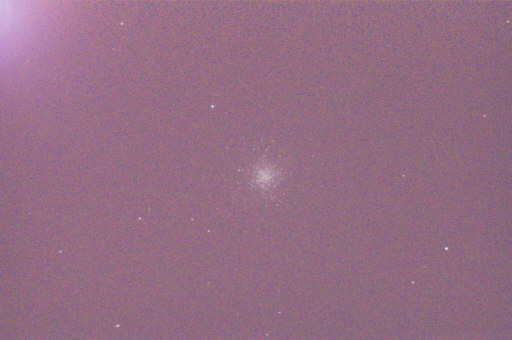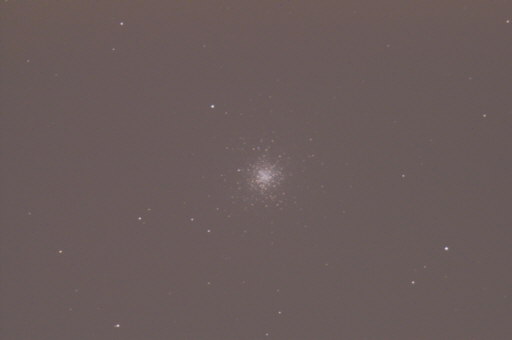
Dark Frame Subtraction:
Astrophotographers and those in the scientific imaging community have long known about the the Dark Frame Subtraction process. In fact, many dSLR's use this method for long exposure noise reduction. The basic idea is to take a long exposure image and then a "dark frame" image of the same duration with the lens cap(s) on the camera (the in-camera process just leaves the shutter closed). The dark frame image, which in theory only contains noise, is subtracted from the real image which, in theory, contains the image + noise. In this way most of the noise is subtracted out of the resulting image.
(image + noise) - (noise) = noise free image
Example:
This is an actual example of RAWHide's Dark Frame Subtraction capability. Shown is a 358 second astrophoto at ISO400 of the Globular Cluster M2 and the corresponding dark frame taken with a Konica Minolta 7D. The final image is the output from RAWHide. The only change here is that the files have been rescaled for the web, other then that, these images have zero post processing.
The original image and the dark frame both show the 7D's characteristic "purple blob". Note that this image was taken in heavily light polluted skies. The results are even better with images taken under dark conditions.
Image with Noise:

Noise (Dark Frame)

Final Image

© 2007-2008 Franklin A. Holub - All Rights Reserved
Last Updated: 01/08/08 09:14 PM